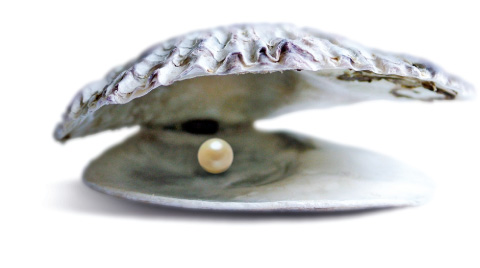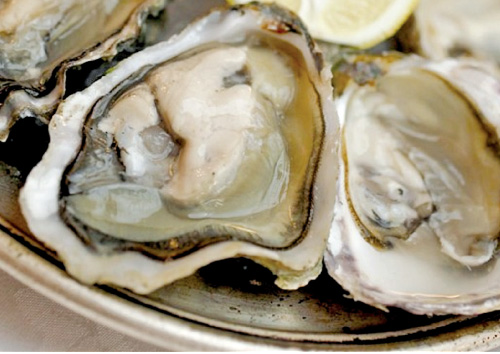Oysters and pearls
Oysters are bivalves, which means that its shell is made of two
parts, or valves. The shell's valves are held together by an elastic
ligament. This ligament is positioned where the valves come together,
and usually keeps both shells in place.
 Most jewellry is fashioned out of precious metals and jewels that are
found buried in the Earth, but pearls are found inside a living
creature, an oyster. Pearls are the result of a biological process --
the oyster's way of protecting itself from foreign substances. Most jewellry is fashioned out of precious metals and jewels that are
found buried in the Earth, but pearls are found inside a living
creature, an oyster. Pearls are the result of a biological process --
the oyster's way of protecting itself from foreign substances.
Oysters are not the only type of mollusk that can produce pearls.
Clams and mussels can also produce pearls, but that is a much rarer
occurrence. Most pearls are produced by oysters in freshwater and
saltwater environments. To understand how pearls are formed in oysters,
you must first understand an oyster's basic anatomy.
The valves open so the oyster can eat. These are the parts of an
oyster inside the shell:
- 'Mouth' (palps)
- 'Stomach'
- 'Heart'
- 'Intestines'
-'Gills'
-'Anus'
-'Abductor
- muscle'
- 'Mantle'
As the oyster grows in size, its shell must also grow. The 'mantle'
is an organ that produces the oyster's shell, using minerals from the
oyster's food. The material created by the mantle is called nacre. Nacre
lines the inside of the shell.

The formation of a natural pearl begins when a foreign substance
slips into the oyster between the mantle and the shell, which irritates
the mantle. It's kind of like the oyster getting a splinter. The
oyster's natural reaction is to cover up that irritant to protect
itself. The mantle covers the irritant with layers of the same nacre
substance that is used to create the shell. This eventually forms a
pearl.
So a pearl is a foreign substance covered with layers of nacre. Most
pearls that we see in jewellery stores are nicely rounded objects, which
are the most valuable ones. Not all pearls turn out so well. Some pearls
form in an uneven shape -- these are called 'baroque pearls'.
Pearls, as you've probably noticed, come in a variety of colours,
including white, black, grey, red, blue and green. Most pearls can be
found all over the world, but black pearls are indigenous to the South
Pacific.
-Internet |

